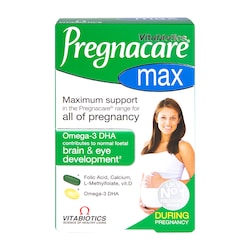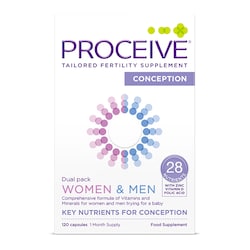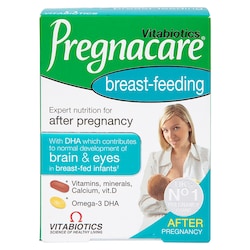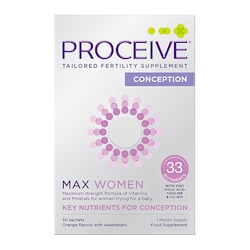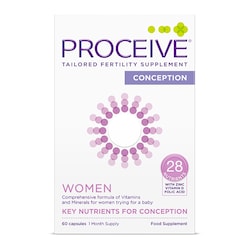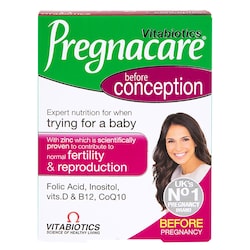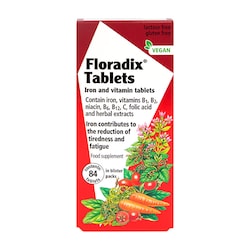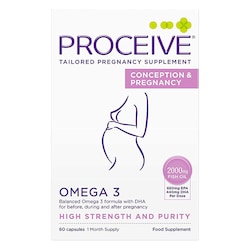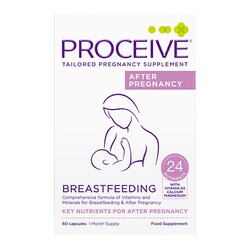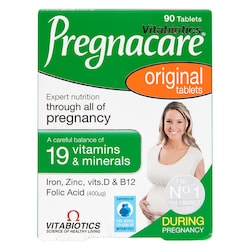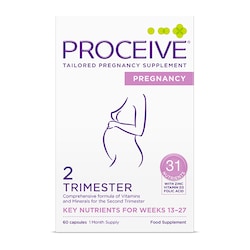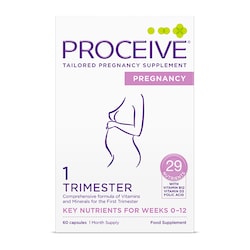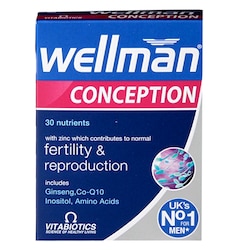20% off £30
Code:QUICK
Conception methods: 5 tips if you’re trying to conceive

Sometimes getting pregnant happens quickly. But it can also take longer. Here we explain conception methods and share tips for couples trying to conceive.
Summary
1What factors can affect fertility?
Age, timing of sex, weight, smoking, medical issues...
2When in the month is the best time to conceive?
Knowing when a woman is most fertile can help couples to plan (or prevent) pregnancy. Females are most fertile at the time of ovulation. The egg...
3Other conception myths
You must have sex in the missionary position to conceive. You can’t get pregnant during your period. You must have sex on the day of ovulation...
Once you make the decision to try for a baby, it’s natural to feel impatient when it doesn’t happen immediately. If you’re in your first few months of trying to conceive, you may be looking for an answer to how long should it take to get pregnant? If you’ve been trying for longer, it could be you’re wondering why aren’t we getting pregnant? Unfortunately, there are no exact answers to how long it takes to get pregnant.
Every couple is different. The NHS provides a general guide that 84% of couples will get pregnant within a year if they have unprotected sex every two to three days throughout the month.1 When exactly it happens though is down to your personal biology and some pretty accurate timing. So, we’ll start this post by introducing the science behind conception.
Why is it difficult to get pregnant?
When you learn about the birds and the bees at school it all sounds so easy. You have unprotected sex, the sperm fertilises the egg, and the next thing you know you’re stocking up on pregnancy vitamins and planning the nursery decor. Except it’s usually not quite that easy. For some women getting pregnant happens quickly. But for others, it can take much longer. How long it will take you to get pregnant can be affected by a whole range of factors.2
What factors can affect fertility?
- Age. Women can find it more difficult to get pregnant as they get older. Research suggests that female fertility starts to reduce from age 35 onwards.3 The connection between a man’s age and fertility is less pronounced.
- Timing of sex. For your best chance of conceiving, having regular sex just before ovulation is a great place to start. But because women's cycles are so variable, getting the timing exactly right can be tricky.
- Weight. Being underweight or overweight can affect the regularity of your menstrual cycle, and this will impact on how long it takes to get pregnant. For example, if you’re underweight your ovaries may not release an egg every month.4
- Smoking. It’s likely to take you longer to get pregnant if you smoke compared to a non-smoking couple. This includes passive smoking.5
- Medical issues. There are many conditions that can affect fertility. For example, disorders of the reproductive system (such as blocked fallopian tubes, endometriosis or a low sperm count) and hormonal disorders (such as polycystic ovary syndrome.) It’s common to only become aware of these issues when you encounter difficulties conceiving.
How do you get pregnant?
If you’re trying to conceive, the best way to increase your chances of success is by understanding your menstrual cycle and recognising the signs that can signal the best time to conceive.
An overview of how the menstrual cycle works
The average menstrual cycle lasts 28 days. But this cycle length varies considerably from woman to woman. Anything from 21 to 35 days is common.
Your menstrual cycle starts on the first day of your period. For clarity, this is what counts as day one. At some point around mid-way in your cycle, your ovaries release an egg. This is called ovulation. When ovulation happens is individual (and can vary for the same woman month to month.) But if you have a 28-day cycle, it typically happens around day 14 of your cycle. Around 12-16 days after ovulation, your next period arrives (if you’re not pregnant of course).6
When in the month is the best time to conceive?
Knowing when a woman is most fertile can help couples to plan (or prevent) pregnancy. Females are most fertile at the time of ovulation. The egg survives for about 12-24 hours after release, creating a window of time for fertilisation.7
Sperm, however, can live inside a woman’s body for up to seven days. Therefore, you can increase your chances of getting pregnant by having sex in the days leading up to ovulation. The tricky part is knowing exactly when ovulation happens.
5 tips if you’re trying to conceive
Getting pregnant is certainly more complicated than we were led to believe as teenagers sat in a sex education class. Here are five conception methods that can help.
There are three main methods of natural family planning (or fertility awareness). These approaches encourage you to track and record signs of fertility during your menstrual cycle. This can help you work out when it’s more likely that you could get pregnant.
The body temperature method There's a small rise in basal body temperature at the time of ovulation. For clarity, this is your temperature when taken at rest as soon as you wake up in the morning. Taking your temperature every morning before you get out of bed for several months can help you predict when you ovulate (and therefore are most fertile.) The increase in temperature is usually only around 0.2o, so you’ll need to use a digital thermometer. Taking your temperature at the same time every morning before eating, drinking and smoking also helps with accuracy. If you notice your temperature is higher for three days in a row (compared to the previous six days) it’s likely you’ve ovulated. Your body temperature will probably remain at this higher level until your period starts. You’re unlikely to be fertile at this time.8
The calendar method It’s possible for conception to happen up to two days after you ovulate.9 But it’s also possible that if you've had sex in the seven days before ovulation, there may be sperm in waiting ready to fertilise the egg. By monitoring the length of your monthly cycle, you can identify patterns that can help you understand when you're most able to conceive.
The cervical mucus method During your menstrual cycle, the texture and amount of female cervical secretions changes. In the days after your period ends, you’ll probably find the inside of your vagina feels dry. But as your body gets ready for ovulation and your hormone levels rise, you’ll start to produce a sticky, white, creamy mucus. This signals the start of the fertile stage of your cycle. Just before ovulation, this mucus will become wetter, clearer and slippery. This is a sign you're at your most fertile time. When the mucus reverts to being thicker and sticky again, it’s a sign your fertility is reducing.10
There isn’t a specific diet that can help you get pregnant. However, eating a balanced diet can allow you to maintain a healthy weight, which can be helpful when trying to conceive.11
In addition, eating a variety of nourishing foods can help prepare a woman’s body for pregnancy. So, the best foods for you when you’re trying to get pregnant are probably the same as those for general well-being.
For example, make sure you eat a range of fruit and vegetables, whole grains and healthy fats. For similar well-being reasons, women preparing for pregnancy may choose to limit or cut out caffeine, alcohol and trans fats. And limiting alcohol consumption extends to men as well. Drinking alcohol excessively can affect sperm quality so consider limiting drinking to 14 units of alcohol a week (over three days or more).12
Taking folic acid doesn’t help conception itself but can aid with preparing your body for growing a baby. Basically, it makes sure you have a good store of this B vitamin so you’re ready for pregnancy from day one.
Folic acid is the supplement form of folate. It’s used by our bodies to make new cells, so it provides important support during the rapid cell growth in the early weeks of pregnancy. The NHS advises all women who could get pregnant to take a daily supplement of 400 micrograms of folic acid. You should also continue taking this supplement for the first 12 weeks of pregnancy.13
Smoking may affect a woman’s fertility. This includes passive smoking. There are also connections emerging between smoking and poorer quality sperm.14 The impact on male fertility isn't certain but as stopping smoking will reduce your partner’s exposure to passive smoke, it makes sense to quit.15
Trying to meticulously time having sex with ovulation can be stressful. Instead, having sex every two to three days throughout the month can give you the best chance of success when trying to conceive.16
How long should you keep sperm inside to get pregnant?
It takes 45 minutes to 12 hours after ejaculation for a sperm to reach the fallopian tubes.17 This is where conception usually happens. With this in mind, can you increase the possibility of pregnancy by keeping the sperm inside you as long as possible? Lying still after sex or raising the legs to prevent sperm leaking out is a commonly shared piece of advice for women trying to conceive.
There’s plenty of anecdotal evidence to support this conception method but can it really make a difference? There are studies that have led to reports that women undergoing artificial insemination can increase the success of fertility treatment by lying still afterwards.18 However, the results are mixed, with no clear guidance that a post-coital horizontal rest will give sperm significantly better odds of reaching an egg.
Other conception myths
- You must have sex in the missionary position to conceive. Pretty much any position can get you pregnant, as long as the sperm enters the female's body.
- You can’t get pregnant during your period. It’s true you can’t conceive mid-menstruation, but you may be able to conceive from sex during menstruation. If you have a short cycle and have sex at the end of your period, it’s not impossible that the sperm will survive until ovulation.
- To conceive you must have sex on the day that you ovulate. The fertile window is bigger than this. Based on the survival rates of sperm and lifetime of an egg, technically conception from intercourse can happen from anything up to seven days prior to ovulation for up to one to two days after.19
Why can't I get pregnant even though I ovulate?
You had sex while you were ovulating, yet you still didn’t get pregnant? When it feels like you’re doing everything right it can be very upsetting when your period arrives dashing your dreams of parenthood for another month.
There are many reasons for not getting pregnant. It could be the timing wasn’t quite spot on and next month you’ll be pregnant. However, if you’ve actively been trying to conceive for a year or more, it may be worth asking your GP for advice.20
- https://www.nhs.uk/common-health-questions/pregnancy/how-long-does-it-usually-take-to-get-pregnant/
- https://fertilitynetworkuk.org/fertility-faqs/factors-affecting-fertility/
- https://www.nhs.uk/common-health-questions/pregnancy/how-long-does-it-usually-take-to-get-pregnant/
- https://fertilitynetworkuk.org/fertility-faqs/factors-affecting-fertility/
- https://www.tommys.org/pregnancy-information/planning-pregnancy/are-you-ready-conceive/how-smoking-affects-female-and-male-fertility
- https://www.nhs.uk/conditions/pregnancy-and-baby/getting-pregnant/
- https://www.nhs.uk/conditions/pregnancy-and-baby/getting-pregnant/
- https://www.nhs.uk/conditions/contraception/natural-family-planning/
- https://www.nhs.uk/conditions/contraception/natural-family-planning/
- https://www.nhs.uk/conditions/contraception/natural-family-planning/
- https://www.tommys.org/pregnancy-information/planning-pregnancy/are-you-ready-conceive/tips-healthy-pre-pregnancy-diet
- https://www.nhs.uk/common-health-questions/pregnancy/how-can-i-increase-my-chances-of-getting-pregnant/
- https://www.nhs.uk/common-health-questions/pregnancy/why-do-i-need-folic-acid-in-pregnancy/
- https://www.ncbi.nlm.nih.gov/pmc/articles/PMC4639396/
- https://www.nhs.uk/common-health-questions/pregnancy/how-can-i-increase-my-chances-of-getting-pregnant/
- https://www.nhs.uk/common-health-questions/pregnancy/how-long-does-it-usually-take-to-get-pregnant/
- https://www.invitra.com/en/sperms-journey-to-the-egg/
- https://www.nhs.uk/news/pregnancy-and-child/lying-down-boosts-insemination/
- https://www.nhs.uk/common-health-questions/pregnancy/when-am-i-most-fertile-during-my-cycle/
- htts://www.nhs.uk/conditions/infertility/


